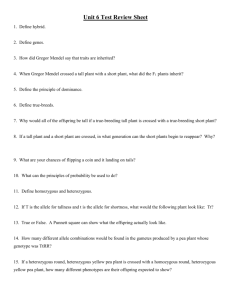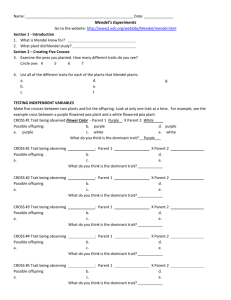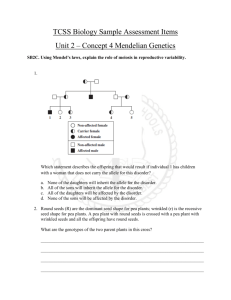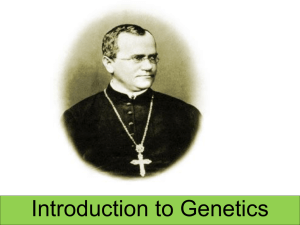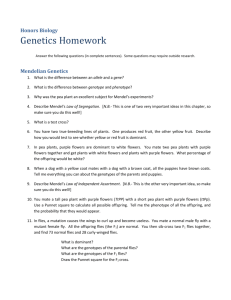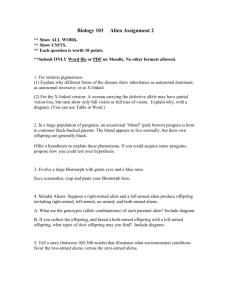Dominant and Recessive Gene
advertisement
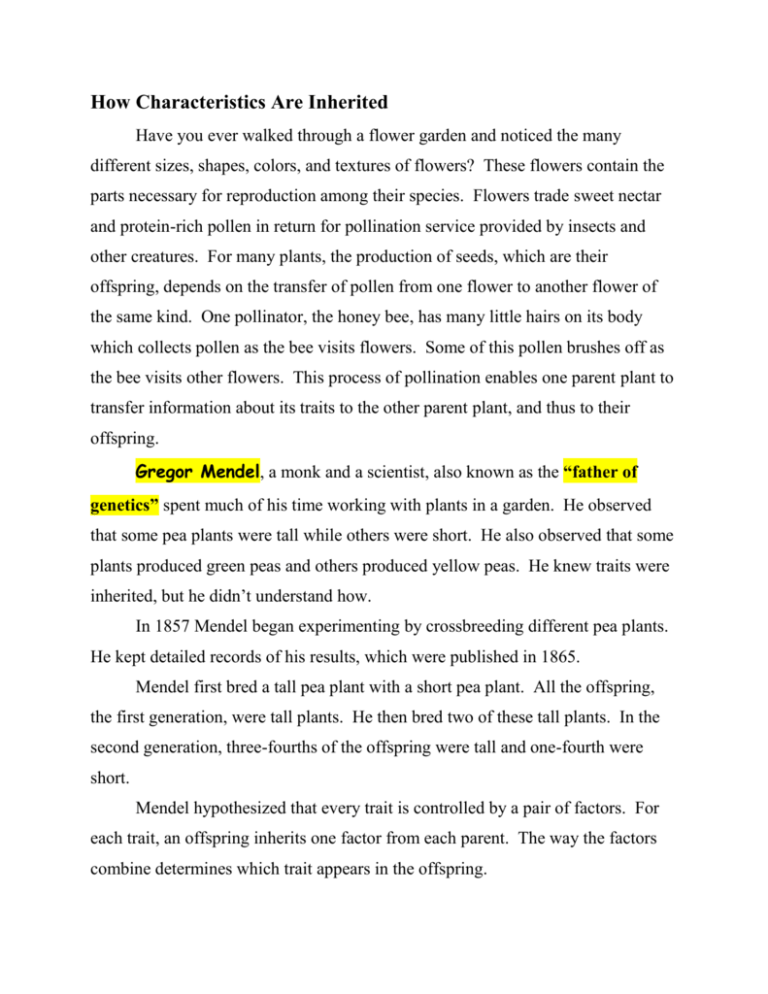
How Characteristics Are Inherited Have you ever walked through a flower garden and noticed the many different sizes, shapes, colors, and textures of flowers? These flowers contain the parts necessary for reproduction among their species. Flowers trade sweet nectar and protein-rich pollen in return for pollination service provided by insects and other creatures. For many plants, the production of seeds, which are their offspring, depends on the transfer of pollen from one flower to another flower of the same kind. One pollinator, the honey bee, has many little hairs on its body which collects pollen as the bee visits flowers. Some of this pollen brushes off as the bee visits other flowers. This process of pollination enables one parent plant to transfer information about its traits to the other parent plant, and thus to their offspring. Gregor Mendel, a monk and a scientist, also known as the “father of genetics” spent much of his time working with plants in a garden. He observed that some pea plants were tall while others were short. He also observed that some plants produced green peas and others produced yellow peas. He knew traits were inherited, but he didn’t understand how. In 1857 Mendel began experimenting by crossbreeding different pea plants. He kept detailed records of his results, which were published in 1865. Mendel first bred a tall pea plant with a short pea plant. All the offspring, the first generation, were tall plants. He then bred two of these tall plants. In the second generation, three-fourths of the offspring were tall and one-fourth were short. Mendel hypothesized that every trait is controlled by a pair of factors. For each trait, an offspring inherits one factor from each parent. The way the factors combine determines which trait appears in the offspring. In peas, tallness is a strong trait, or dominant trait. Shortness is a weak trait, or recessive trait. Factors for both dominant and recessive traits may occur in an organism’s chromosomes. However, recessive traits can be seen only if both parents pass the factor for it to the offspring. If only one parent pea plant, for example, passes a factor for shortness, the factor remains hidden. Then none of the offspring are short. Punnett Square Chromosomes are tiny, threadlike structures inside most cells of every organism, or living thing. Chromosomes carry information about the organism in units called genes. When living things reproduce, they pass their genes along to their offspring. Each parent has 23 chromosomes. Maternal Grandma Maternal Grandpa Paternal Grandma MOM Paternal Grandpa DAD Offspring Maternal Grandma Maternal Grandpa Paternal Grandma MOM Paternal Grandpa DAD Offspring



